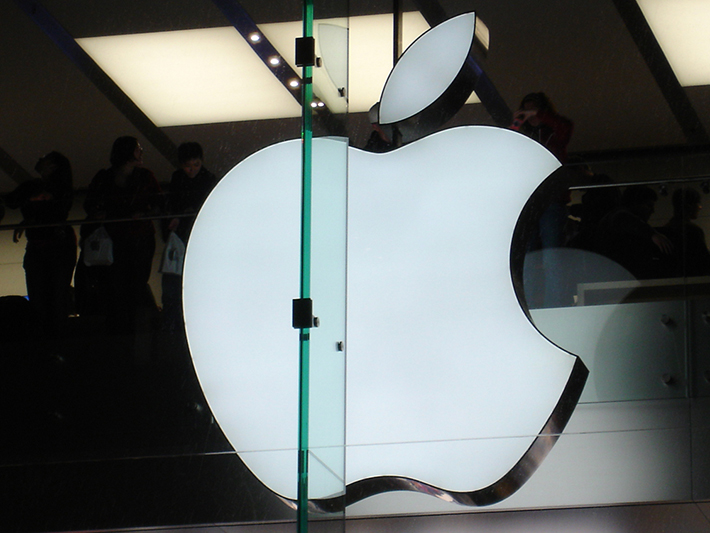Tech gurus, critics and consumers tuned in to the live presentation of the newest generation of Apple products on Tuesday.
The live stream event—which could only be viewed from Apple devices—was the launching pad for the Apple Watch, a combination watch, phone, fitness device and scheduler with three distinct designs; Apple Pay, a secure, wireless, mobile pay feature for Apple devices; and the iPhone 6 and iPhone 6 Plus, the largest and thinnest versions of the iPhone to date.
George Washington Today spoke to George Washington School of Business professors Tom Novak and Donna Hoffman, co-directors of GW’s Center for the Connected Consumer, about the new additions to Apple’s roster.
Q: How would you rank “Apple Live” as an event? Do you think the technical problems with streaming overshadowed the products?
A: Tom Novak (TN): Apple doesn’t have the best reputation for providing reliable online services, and the streaming problems definitely detracted from the company’s message. A Chinese translation voiceover drowned out Tim Cook’s words, there were server errors, connection drops, app crashes and other issues. You have to wonder, “If the company couldn’t manage a working live stream, will Apple Pay fail when used in the check-out line at Whole Foods?”
A: Donna Hoffman (DH): The live event issues threw into sharp focus how difficult it is to get the “Internet of Things”— the interconnection between devices in the internet age—working at the consumer level. Even iTunes went down after Apple announced the exclusive, free U2 album download on Tuesday. If the company—with all its resources and tech know-how—can’t get something like this right, then how is it going to work when it really counts?
Q: Which product do you predict will fare best with customers, critics?
A: TN: From the brief demo, we saw that the Apple Watch will enable entirely new ways for people to communicate with each other. For the first time, you can send someone your heartbeat, and they can feel it. I think we are going to be surprised at the rich range of ways third-party developers will develop for people to communicate through the Apple Watch. One of these innovations could be the basis of the next Facebook.

George Washington School of Business professors Tom Novak and Donna Hoffman are the co-directors of the Center for the Connected Consumer.
Q: How would you rank the products in terms of innovation?
A: TN: The Apple Watch is the big innovation. People are already starting to advocate for the watch to work for them. For example, since the Apple Watch is designed for wear on the left wrist, and operate with the right hand, there is already a change.org petition to create a left-handed version.
A: DH: I’ve owned the FitBit, Nike Fuel Band and a Basis wearable, and the Apple Watch blows these fitness devices away. It’s highly likely that it could change consumer behavior, just as the iPhone and iPad did. However, it will take consumers some time to learn how to use it, so it will be interesting to see how adoption plays out.
Q: Which product is the biggest gamble?
A: TN: Apple Pay has a lot of promise, but Apple will have to demonstrate that they can provide both reliable transaction services and post-purchase support. Currently, Apple provides extremely poor and inconvenient access to customer’s iTunes purchase history. With Apple Pay, consumers will need clear records of their purchase history, such as the one Amazon provides.
A: DH: The Apple Watch is a big gamble because it’s expensive, compared to mainstream watches and fitness devices, and it could be difficult to use. Apple didn’t say much about connectivity and since the watch needs the iPhone to function, I am unsure how things will play out. Also during the demo, the watch was not being used from someone’s wrist, but from a stand, which could affect connectivity. That being said, Apple Pay is probably the biggest risk in terms of functionality.
Q: What do the newly released products say about the direction of Apple, Inc?
A: TN: Apple seems to be targeting the individual. The company wants their products to be in your pocket, on your wrist and to able go everywhere you go. However, they don’t seem to be very interested in the home. However, Samsung purchased D.C.-based SmartThings this summer, a move that is solidifying their position in the home. Ignoring the fact that Samsung has larger market share of smartphones than Apple, we could be heading for a world where Apple is the brand of the body and Samsung is the brand of the home.
A: DH: It was interesting that Apple has moved away from the “i” labeling for new products The choice could have been a way to add finality to the end of the Steve Jobs era or as a means of moving toward stronger branding for better market differentiate market. However, since the Apple Watch can also function as a remote control and the iPhone already controls smart devices through apps, it is possible that Apple will release a great looking smart hub, smart television and other smart devices for the home and office.


